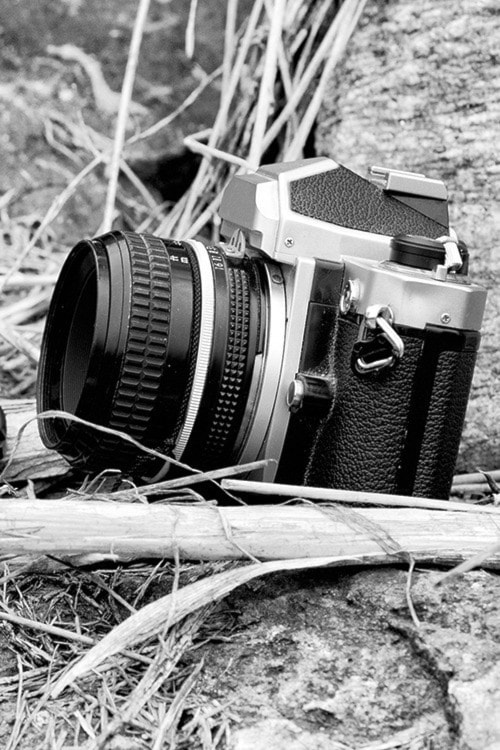When I wrote about this year’s Vancouver Swap in April I mentioned that I always go to the event wondering what the latest trends will be, or what I see popular with the photographers that attend.
I didn’t discuss it in that article, but, this year those photo enthusiasts that turned up surprised me when they all but ignored the modern digital equipment sellers were displaying, and, instead seemed mostly interested in older 1970s manual cameras and lenses.
I commented about that this week to a photographer who came in to pick up an old Canon FTB camera she had left for light seal replacement. She had dropped it off a couple of weeks ago saying it had been given to her. She also brought in an old cloth camera bag and pulled out three old Canon lenses she got with the camera and asked me my opinion.
Other than the 50mm that was mounted on the camera, there was a 28mm, a 135mm and a 200mm. All were Canon brand and, although very dirty from the dissolving foam inside the bag, very great lenses.
I remembered the time period, before zoom lenses, or automatic exposure, when cameras that actually had light meters like that old FTb were the pinnacle of technology.
The original owner had chosen the most popular lenses of the day. And now a new owner was planning on putting the 45-year-old film camera and lenses to use again.
It’s been about 16 years since digital single-lens-reflex cameras became affordable and capable of making images equal to, and now surpassing, film cameras.
The photographer I talked to in my shop as well as those I met at the swap meet all owned modern DSLRs. I suppose there is a sense of nostalgia in holding and shooting those shiny, old metal cameras.
The local high schools whereabouts I live have photography programs where students use film cameras and learn to process and print photographs. I don’t know if the same happens in Vancouver where the swap meet was held. Nevertheless, those old film cameras are certainly popular.
There are many of us old enough to have used, and even to have made a living with cameras during the 1970s who don’t for a moment regret the change in technology from film to digital. I sometimes wonder how we survived with that inefficient, cumbersome technology from a time period my friend Alex refers to as, “the days of click and pray”.
Digital cameras are a great way to learn photography, with instant reinforcement and no cost unless one wants to make prints; whereas, with film there is the initial cost of film, the cost to process, and the cost to print; however, one can easily and economically scan and download the image file to a computer. And unlike the cost of a DSLR those old cameras have become very inexpensive. That photographer’s whole kit, camera and three lenses here in B.C. should cost well under a hundred dollars.
I don’t know if it’s the nostalgia, or the low price, that has brought a return of popularity to those old film cameras. Even though I personally wouldn’t want to return to film I do remember how nice it was to hold those old cameras (there is a 1950’s Olympus sitting on a shelf in my store that I keep eyeing) that were made by engineers instead of technicians and I will grudgingly admit there is something wonderfully tactile in the quality of an image captured on film.
These are my thoughts for this week. Contact me at emcam@telus.net. Stop by Enman’s Camera at 423 Tranquille Road in Kamloops. Or (250) 371-3069. I sell an interesting selection of used photographic equipment.
